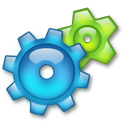Documents
GoSyn
Doucument: Tutorial - 2011
Introduction
All the data described are additionally available as an
easy to use synthetic biology workbench in the internet under the
following link:
http://gosyn.bioapps.biozentrum.uni-wuerzburg.de/index.php
The compilation includes recent references to synthetic
biology efforts, the new workbench for cellular processes and its
related topology.
The aim of the GoSyn homepage is to transfer biological
processes and functions of different organisms into technical
processes. These processes are subsequently divided into smaller
subunits – so-called modules – in order to dissect and simplify
the process. The simplification is a prerequisite for the generation
and manipulation of new biological processes.
A statistical survey displays the distribution of
biological modules
within
different species
in
an almost complete list of literature references (according to
PubMed)
exclusively
in technical literature (IEEE journals) versus synthetic biology
literature
and
between COG and Go classification
Moreover
a description of the modules and the assignment between technical
terms and biological modules is provided.
The user should select the organism
(man, mouse, E.coli ),
7 different main modules and 23 sub modules. For chosen organism and
module, a separate page is provided with a description of the module,
a list of MESH-terms and a table with the corresponding go-terms,
proteins and cog families. Further information and sequences are
available as database cross-links.
For an easier access, two different search scenarios are
applicable, either based on keyword terms or on process search. The
results are visualized by text-highlighting functions, which are
supported by graphical statistics and interaction networks to other
partner proteins.
Keyword-search :
is an AMIGO like search. The keyword search is resulting in a list
of all modules which contain GO-terms with the search-keyword
highlighted in red. The keyword search is trivial but useful for GO
terms searches.
Process-search :
is a search for biological and technical processes. Based on the
buzzword entered, a regular keyword search is performed in the
background. For the identified GO-terms all proteins connected to
these processes are selected. The modules of the protein’s
functions are presented as results. The result is provided as text
information and as graphical pie charts. One pie chart provides an
overview over all modules while individual pie charts are
additionally shown per module.
Keyword search example:
Entered
keyword: glycolysis
Selected
organism: Homo
sapiens
Result:
Glycolysis in Homo
sapiens can be
found in three different modules: Activation, Pathway and Regulation.
Process search example:
Investigated
process: Glycolysis
Selected
organism: Homo
sapiens
Result:
The first pie chart shows that the process is dominantly a strongly
regulated pathway.
Additional
pie charts describe
further information: the process is mainly positively regulated and
is linear within an active cell.
A connection with the interaction
database IntAct provides the opportunity to identify interactions and
connections to other biological processes including graphical network
visualization. Direct
translation of processes and modules in biological organisms and
protein interaction networks may be retrieved including gene ontology
searches. This allows easy construction of own novel networks
containing desired technical or biological modules. The GO synthetic
software can be used as an intuitive and creative tool for process
engineering as well as for the design of new experiments.
As a result a list is provided which contains all
modules that have been identified within the process. The list
additionally displays the related processes and the connection
between these processes. Proteins within the process can be added.
The terminology can be switched between technical and
biological modules.
Visualization shows the interaction between the proteins
in the process based on the IntAct database. Activating proteins are
highlighted in orange, while inhibitory proteins are highlighted in
blue.
The visualized result and protein
assembly can be readily exported into the open-source Cytoscape
platform (Cline et al., 2007
for the dynamic visualization of molecular interaction networks. It
is also possible to modify the network further and assign additional
data (gene expression metrics; any other desired data sets) and/or
detailed functionalities to each network element.
Together with biological expert analysis (such as
literature search and interactom search) even more extended examples
can be explored with the two-level classification (see supplement
information and results).
 eGoSynthetic - an enhanced synthetic biology workbench
eGoSynthetic - an enhanced synthetic biology workbench
 eGoSynthetic - an enhanced synthetic biology workbench
eGoSynthetic - an enhanced synthetic biology workbench